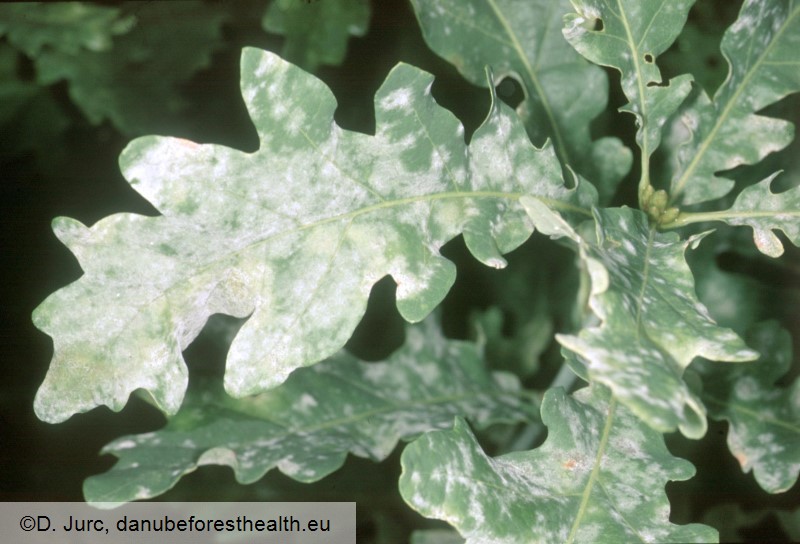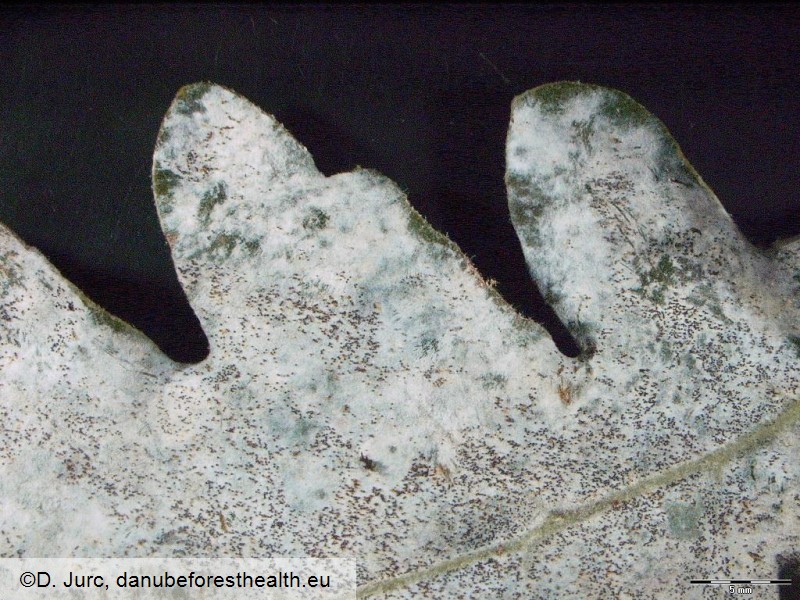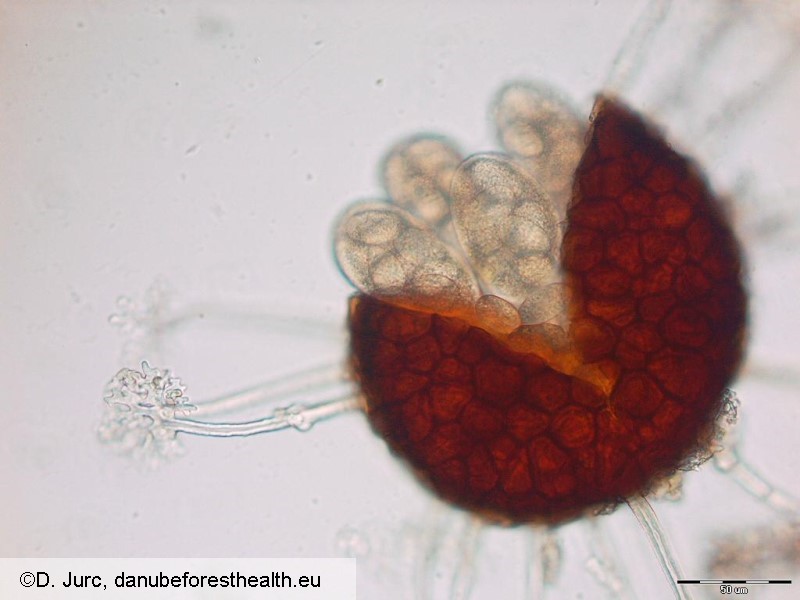Fungi
Powdery mildew of oak
Erysiphe alphitoides
Nikica Ogris, Thomas Cech
|
|

Fig. 1. Powdery mildew on oak leaves

Fig. 2. Black fruit bodies (cleistothecia) on white mycelium

Fig. 3. Cleistothecium with asci and ascospores
DETECTION PERIOD:
May to October
DESCRIPTION:
Powdery mildew is recognized by superficial white fungal patches, variable in size and often coalescing, on both the upper and lower leaf surfaces (Fig. 1). At an advanced stage, the infected leaves look as if they have been dusted with flour.
In late summer, spherical, closed fruiting bodies (cleistothecia) may develop in clusters (Fig. 2). These initially appear yellow, later reddish, finally blackish, and reach 0.1 mm in size. Each of them is furnished with several appendages which are distinctive in form, forked to dichotomous branches at their tips (Fig. 3).
HABITAT:
On European oaks (Quercus sp.), rarely on beech (Fagus sylvatica) and sweet chestnut (Castanea sativa). Intensity of the disease is higher at lower air humidity and stronger sunshine, e.g. at forest edge and stand gaps.
STATUS:
Widespread through Europe.
IMPACT:
The most economically important among powdery mildews. Severely infected leaves curl up and can die. The shoot tips also can become disformed [c1] [NO2] and twisted. The infection is usually quite intense, the whole crown can be severely affected; leaves can be shed prematurely. Heavy infection lowers yearly increment and health vigour of the tree. Mildew infections can be both predisposition and an additional factor for oak dieback (complex disease).
SIMILAR SPECIES:
Other powdery mildews on oaks e.g. E. hypophylla, E. quercicola or Phyllactinia roboris. We can distinguish them only by microscopic investigation or molecular techniques.
|